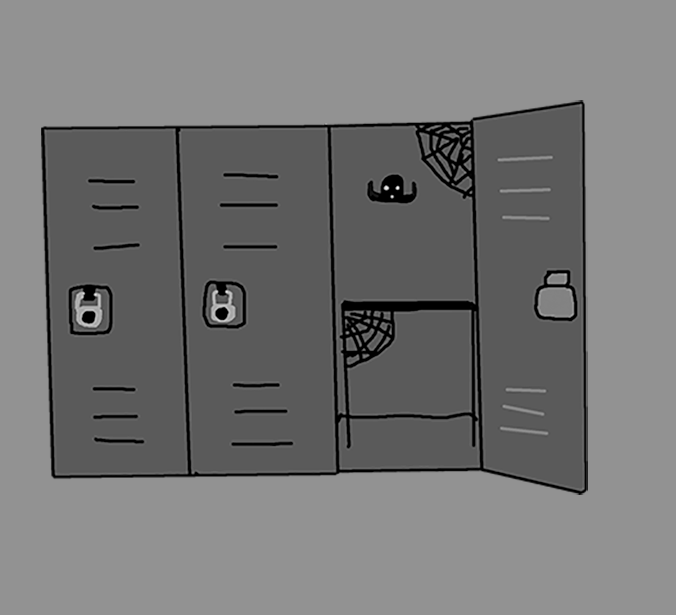Walking through the hallway of Germantown High School in Madison, Mississippi, everyone will notice one distinctive aspect: no lockers. In the past decade, schools without lockers have increased exponentially with school districts from California to Florida removing the ubiquitous metal symbols for school.
With a new generation of e-books, secondary schools across the nation are beginning to modernize and save costs by not building or dismantling lockers. According to The Journal of Industrial Teacher Education, school facilities including lockers can have as large of an impact as teachers on the ability to learn. Thus, lockerless schools could provide tremendous educational benefits.
As Trinity plans to incorporate much wider lockers into the new Middle School building, we must evaluate the role of lockers in schools.
Modernizing to a new age of educational architecture, secondary schools should dismantle and/or not build lockers to improve cost efficiency, safety and the learning environment.
As fewer people are using lockers, lockers pose a drain on resources and are not cost effective.
“The last time I used a locker was in the 7th grade, so I don’t exactly find lockers to be an integral part of my school experience,” junior Will Haftel said.
Trinity’s locker environment reflects that of the nation because the majority of students, particularly high schoolers, do not use lockers frequently.
“I don’t use my locker at all. I find carrying all my books in my bag to be much more convenient,” sophomore Taylor Langdon said. “Because of our use of online textbooks, I am able to fit everything inside my backpack, and I don’t think lockers are necessary. Most people seem to use their lockers either to store things until they are necessary or not at all.”
According to USA Today, Madison County saved $200,000 by not building lockers for new schools, and new schools reduced costs of construction by 4% on average without lockers. If students are using lockers less from the digitalization of school, the maintenance costs of lockers will also eventually become obsolete.
Additionally, the safety threats caused by lockers could be eradicated by dismantling lockers.
As the University of Texas notes, lockerless schools have reduced the use of contrabands—drugs and weapons theft, and bullying. Because there isn’t a place to store dangerous weapons or substances and cliques associated with lockers die down, lockerless schools create a much safer school environment.
After observing lockerless schools in Texas, researchers concluded that discipline referrals decreased 90% after lockers were removed. Furthermore, as students feel more secure in hallways and at school, they evidently will improve academically and socially.
As school violence has increased at an astonishing rate, lockerless schools could help slow the tide of insecure campuses. Thankfully, national school violence has not seriously affected Trinity, but locker reforms could still prevent future misconduct.
However, some critics note that lockerless schools have some safety concerns.
“As long as you have some valuable items like laptops, I think it’s nice to offer some lockable space, and the lockers provide a security for valuables,” Headmaster Craig Maughan said.
But, seeing that theft has also declined from lockerless schools because students are more conscious of their belongings, the security issue for valuable items would be minimized.
Overall, lockerless environments also enhance the learning experience significantly.
Besides the reduction of distracting noise produced by lockers, no lockers force students to come to school better prepared.
Encouraged to carry around notebooks and textbooks either electronically or physically, students unsurprisingly will develop better academic organizational skills. In addition, as teachers don’t have to worry about students putting inappropriate substances in their lockers, they can focus more on teaching.
Consequently, Granger High School reported improved math, reading and writing scores by at least 4% for the Texas Assessment of Academic Skill after it went lockerless.
Furthermore, some believe that lockers don’t really affect educational environments negatively.
“I think the lockers [at Trinity] look fine and definitely fit the campus mood,” Langdon said.
However, lockerless schools can incorporate more aesthetic environments without obsolete lockers consuming unnecessary space, especially for public schools with thousands of students.
Similarly, more classroom space and increased space for gathering areas could psychologically improve student performance.
Although critics deem that backpacks will get too heavy, the expanding use of laptops and electronic equipment will alleviate this concern, and students are also encouraged to be more efficient for school so that they are more academically prepared.
Although no lockers might appear to be a shocker, lockerless schools will be the essential rocker switch to turn on educational success.











